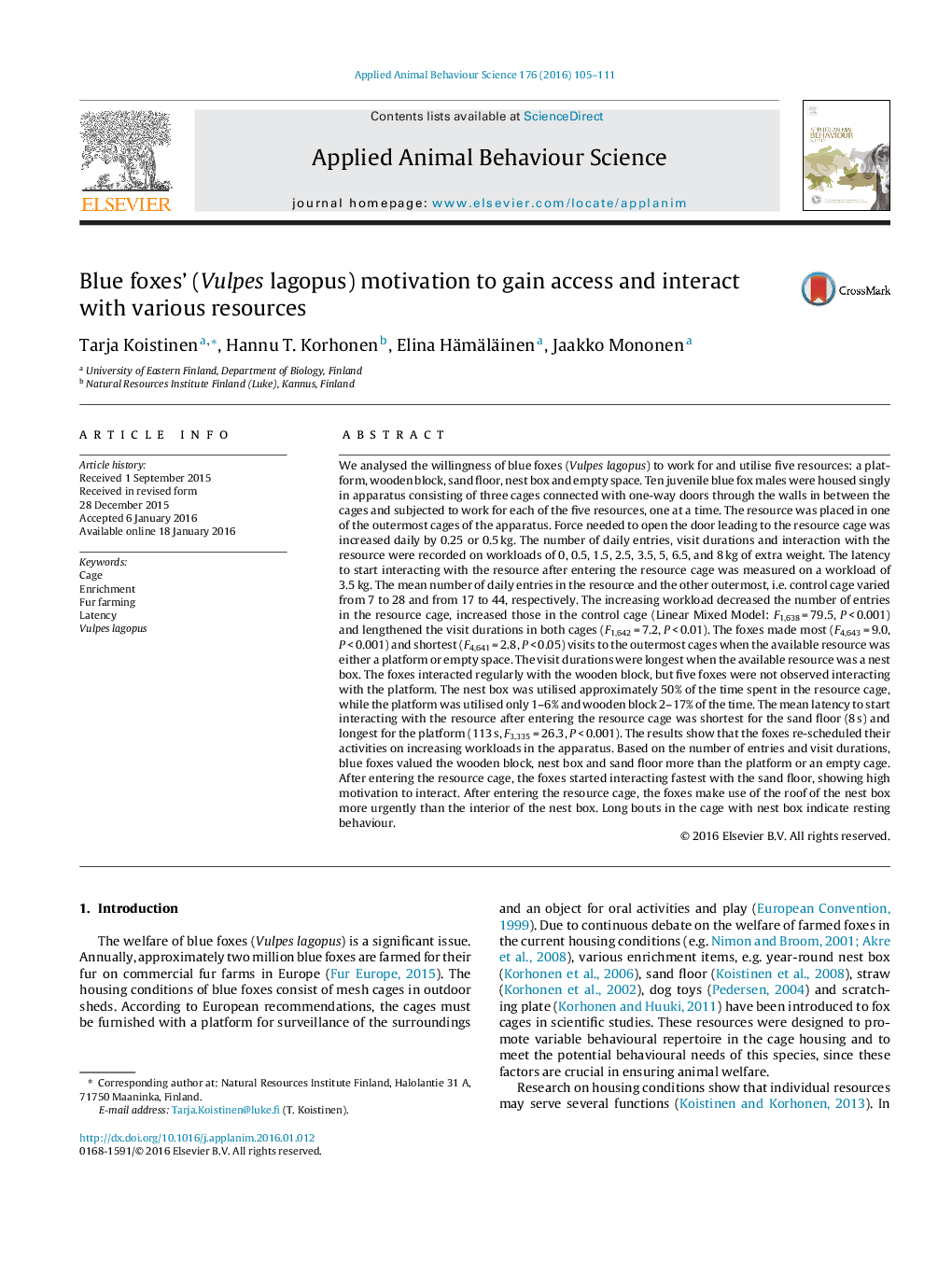| کد مقاله | کد نشریه | سال انتشار | مقاله انگلیسی | نسخه تمام متن |
|---|---|---|---|---|
| 4522410 | 1625330 | 2016 | 7 صفحه PDF | دانلود رایگان |

• When accessed, blue foxes interact urgently with a sand enrichment.
• Nest box is used as an observation and resting site more than as a hiding place.
• Blue foxes experienced with various enrichments do not interact much with platform.
• Blue foxes may divide up their area for different activities when possible.
We analysed the willingness of blue foxes (Vulpes lagopus) to work for and utilise five resources: a platform, wooden block, sand floor, nest box and empty space. Ten juvenile blue fox males were housed singly in apparatus consisting of three cages connected with one-way doors through the walls in between the cages and subjected to work for each of the five resources, one at a time. The resource was placed in one of the outermost cages of the apparatus. Force needed to open the door leading to the resource cage was increased daily by 0.25 or 0.5 kg. The number of daily entries, visit durations and interaction with the resource were recorded on workloads of 0, 0.5, 1.5, 2.5, 3.5, 5, 6.5, and 8 kg of extra weight. The latency to start interacting with the resource after entering the resource cage was measured on a workload of 3.5 kg. The mean number of daily entries in the resource and the other outermost, i.e. control cage varied from 7 to 28 and from 17 to 44, respectively. The increasing workload decreased the number of entries in the resource cage, increased those in the control cage (Linear Mixed Model: F1,638 = 79.5, P < 0.001) and lengthened the visit durations in both cages (F1,642 = 7.2, P < 0.01). The foxes made most (F4,643 = 9.0, P < 0.001) and shortest (F4,641 = 2.8, P < 0.05) visits to the outermost cages when the available resource was either a platform or empty space. The visit durations were longest when the available resource was a nest box. The foxes interacted regularly with the wooden block, but five foxes were not observed interacting with the platform. The nest box was utilised approximately 50% of the time spent in the resource cage, while the platform was utilised only 1–6% and wooden block 2–17% of the time. The mean latency to start interacting with the resource after entering the resource cage was shortest for the sand floor (8 s) and longest for the platform (113 s, F3,335 = 26.3, P < 0.001). The results show that the foxes re-scheduled their activities on increasing workloads in the apparatus. Based on the number of entries and visit durations, blue foxes valued the wooden block, nest box and sand floor more than the platform or an empty cage. After entering the resource cage, the foxes started interacting fastest with the sand floor, showing high motivation to interact. After entering the resource cage, the foxes make use of the roof of the nest box more urgently than the interior of the nest box. Long bouts in the cage with nest box indicate resting behaviour.
Journal: Applied Animal Behaviour Science - Volume 176, March 2016, Pages 105–111